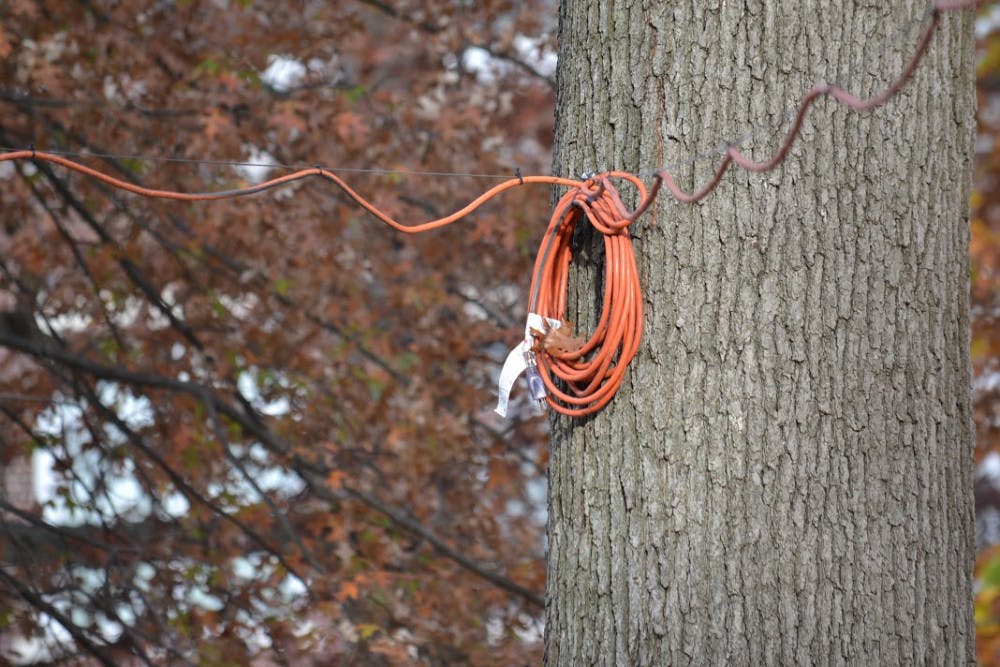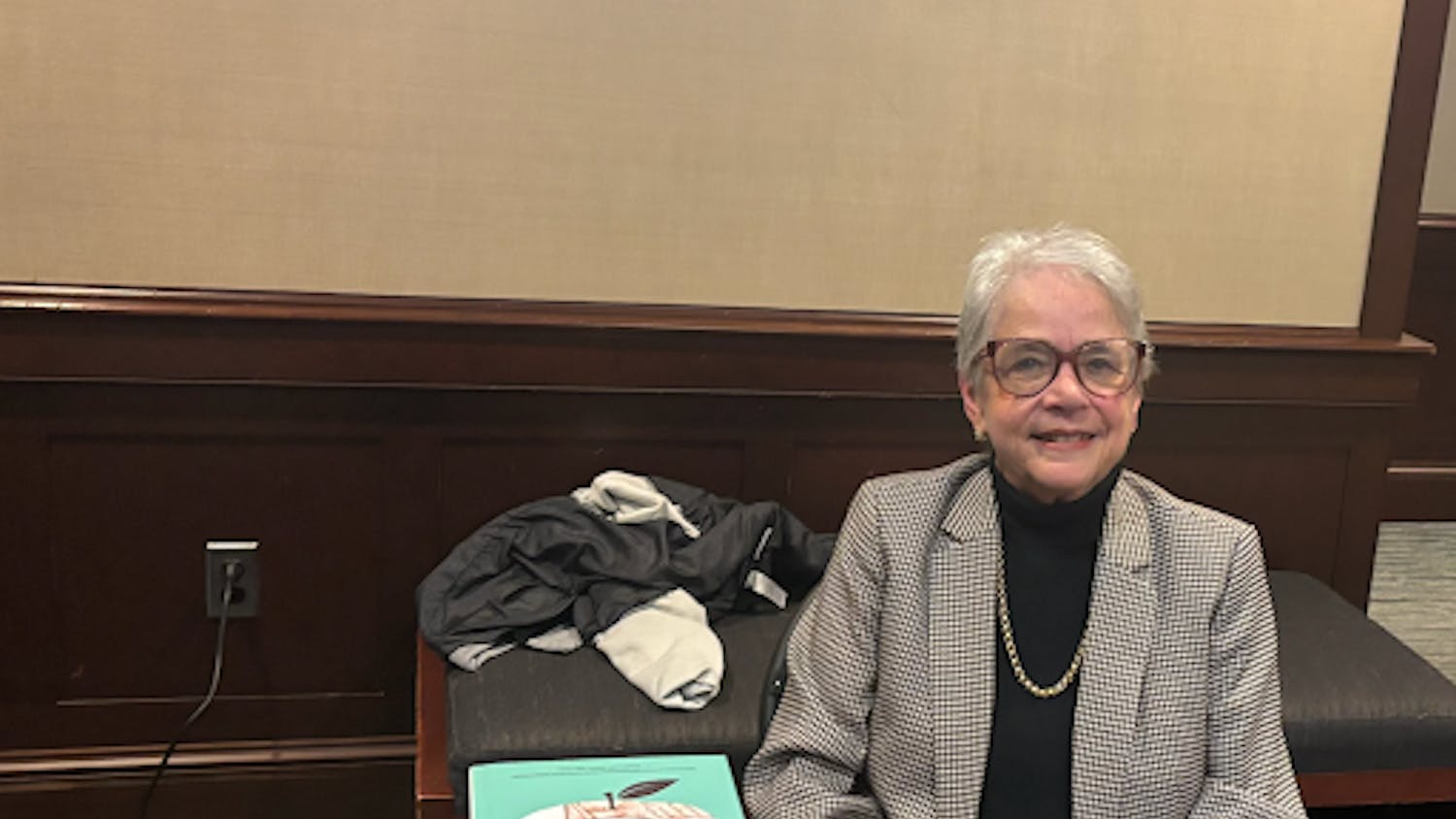By Gabrielle Beacken Nation & World Editor
In one lucky lab room of Armstrong Hall, students would effortlessly connect to TCNJ-DOT1X on their computers or mobile devices and spend their lab time freely Googling, streaming and sharing with convenience and ease. Yet, in the lab down the hall, a very stark and different scene ensued. Frustration and anxiety filled the room as students quickly learned that accessing a reliable internet connection would be a nearly impossible feat.
“In Armstrong, you’d have the best signal in the world in one lab room. Go to a different room and you’d start to see the connection spike up and down,” said senior computer engineering major Alex Cook. “It was ridiculous.”
However, by the end of the 2014 fall semester, this gloomy predicament became a turnaround success story, as the College’s Wireless Project installed full coverage in Armstrong Hall, the home of the engineering school. With Armstrong checked off, the College then directed their attention to Bliss Hall, where by January 2015, the students of Bliss relished in their own newfound wireless connection. Further happiness and relief is expected to come as the College plans to bring accessible WiFi to each building on campus.

The College is currently in its third year of a campus-wide WiFi network project that is intended to offer a local area network (LAN), a network independent of Ethernet connections, to all academic, administrative and residential buildings, including heavily populated outdoor areas. Having a widespread WiFi presence on campus is the College’s first priority — in other words, the College is focusing on quantity. The signal strength, or the quality of that implemented WiFi will be the second phase of this extensive wireless services plan.
During the venture’s inception three years ago, the College intended to conduct this large-scale project in the most cost-effective manner: using in-house staff and employing reliable, economical resources, according to Mark Gola, the College’s director of media relations.
However, this method proved not as productive as originally proposed.
Due to negative campus feedback, this in-house system was swiftly altered. The main concern of the campus community was the prolonged time the WiFi implementation was taking.
The College then “expedited” the process by hiring outside help for the final academic and administrative buildings and outdoor space, Gola said.
The objective is to complete the academic and residential buildings before Fall 2016, while having the administrative location projects completed by the end of that semester. In just three years, the College has completed its wireless objectives in 25 academic buildings as well as several outside areas, according to Gola.
The employment of outside consultants will speed up the Wireless project — but it will come at a cost, Gola said. The College has already invested over $2 million in wireless infrastructure. These costs include labor contracts for workers to run cables and install access-points around campus.

This spending also includes hardware purchasing, such as access-points, controllers, user licenses, network switches and cabling, according to Gola.
“The College continues to work toward achieving full wireless coverage on campus,” Gola said. “Plans are to have the project completed within the next year.”
There are also non-fiscal concerns that prevent the College from becoming fully wireless. The construction of the buildings themselves proves an unexpected, yet challenging hurdle.
Two residential buildings in particular have presented several impediments: Travers and Wolfe halls.
“The concrete structure and concrete masonry unit walls in Travers and Wolfe are not optimal for a wireless signal,” Gola said.
In addition to the thick, highly inflexible edifice of these buildings, Travers and Wolfe are currently under consideration for a complete renovation. Wireless services in these halls are included in pending proposals devised by the College, according to Gola. Buildings without WiFi that are not expected to undergo renovations will receive priority over buildings that will receive renovations.
“We do not want to install a costly system and be forced to remove it shortly thereafter when the buildings are renovated,” Gola said.
Two buildings on campus that lack full wireless coverage, yet still have limited Internet access through hot spots, are Packer and Kendall Halls. Implementing a full-fledged wireless service in these buildings is especially challenging because of its expense.
“Due to the cost threshold to install full wireless in those two buildings, the College is required to go through a public bidding process,” Gola said. “The bidding process ensures the college is receiving submissions from qualified contractors that are competitive in terms of cost and schedule.”
Hot spots can also be found in lounges and common areas in every building on campus, with the exception of the Facilities/Powerhouse Building and the Spiritual Center. These hot spots act as a temporary solution for areas without full access to a wireless network.
“We found that near the academic buildings is where you would get the best WiFi coverage,” said senior electrical engineering major Nick Vitone.
Vitone and Cook created a project this past Spring 2015 semester for their engineering classes that would “provide students with a visual diagram to see where there was WiFi on campus and where there wasn’t,” Vitone said.
For their project, Vitone and Cook created a device that would measure signal strength location based on different parts of campus. These GPS coordinates would then transfer to a heat map, where different variations of colors represented a weak or strong signal.
“Something surprising was there was more signal outside than expected,” Vitone said. “It’s pretty good outside the library.”
The College utilizes the enterprise class wireless system from Aruba Networks that “ensures a seamless roaming experience across campus,” according to Aruba Network’s webpage. Aruba Networks promises that devices changing locations will be able to find the appropriate wireless providers depending on its location in an easy and automatic way.
“These types of systems support thousands of access-points and make them work as a single coordinated system, allowing devices to roam from location to location seamlessly,” Gola said.
According to Gola, there are 1,200 access-points already on campus and several hundred more will be installed by the conclusion of the wireless project.
The College inserts access-points in areas that allow for easy access and maintenance, such as hallways in residential buildings. However, the effectiveness of access-points has been threatened due to the interference from students bringing their own access-points.
“These are prohibited access-points that can cause interference with the College’s wireless radios, resulting in weakened coverage for others,” Gola said.
Another hindrance confronting the efficacy of access points is the renovation of older buildings and the interfering construction on campus.
With renovation plans set to take place for the next several years, including the construction of the new STEM building and the Brower Student Center renovation, construction will continue to be a harmful interference for access-points, thus resulting in slower or limited wireless coverage all around campus.
Wireless design of heavily populated areas, such as classrooms or popular outdoor spaces, are specifically designed to sustain a greater number of wireless devices, Gola said.
Cook and Vitone suggest that the College should focus on stabilizing the WiFi signal on campus, rather than the constant expansion of it.
“The signal can go up and down — not always 100 percent reliable,” Cook said. “When there’s heavy traffic, you’re going to see a bit of a slowdown.”
In the especially crowded areas, such as the library, the current bandwidth capacity can be worrisome, according to Cook. The bandwidth scope expresses how much data can be transferred in a specified amount of time. So when every student in the library is accessing the internet on their laptops or smart phones, the capacity of the bandwidth becomes a critical component.
“I think that’s the biggest thing — the slow bandwidth,” Vitone agreed. “Perhaps TCNJ can invest in a better system.”
According to Gola, the College can begin strengthening the coverage quality of these access points when the renovations to designated buildings are completed. Once the old buildings receive their access points and the new buildings are completed with their new shiny features, the College will then consider altering the quality of the network.
“The College will revisit the signal coverage and density in existing buildings after completing the campus implementation,” Gola said.
A date for this revisit was not disclosed, but renovations to residential and academic buildings are expected to span over the next five years, according to the College’s developmental and construction reports.
For now, Gola says having a standard WiFi omnipresent on campus is more important than creating a stronger signal in selected areas.
Cook and Vitone encourage students to expand and conduct further research on their WiFi project because there are still many unanswered questions.
“The biggest thing we didn’t get to do, but if someone were to continue this… one should focus on the actual network. Instead of seeing where (WiFi) is, ask why does it disconnect sometimes,” Vitone said. “When everyone freaks out because the internet is down, ask what is the main cause? We weren’t exactly sure — we think someone should analyze that.”







